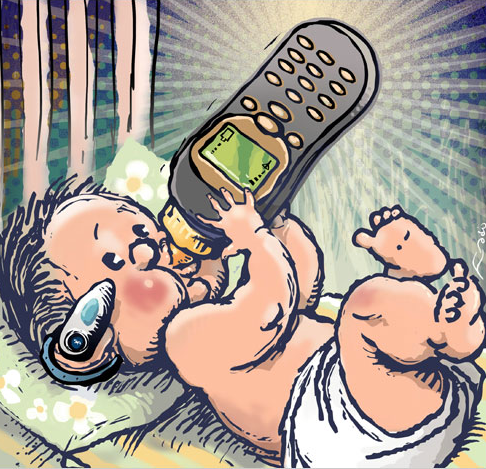Communication is so vital for navigating the world around us. These days, pretty much everybody has their own cellphone (or two…) and you can’t walk down the street without bumping into somebody texting or yammering away into their Bluetooth headset. But what if you found yourself suddenly unable to speak? Even worse, what if you could barely breathe? If you had paradoxical vocal fold movement (PVFM), this scenario would be commonplace for you. Fortunately, speech therapy can help.
Preventing Voice Disorders in Children
Speech DisordersIf you’re a sports fan, you’ve probably watched or listened to “Mike and Mike” on ESPN. The duo are among the funniest sports broadcasters around, but even the mighty Mike Golic was not immune to something that your child might experience at some point: a voice problem. Golic tried to work on the show this morning, but he was sent home pretty quickly when his voice simply couldn’t handle it.
Everyone comes down with a sore throat every now and then, but what happens when it turns into a voice disorder? We all know that taking vitamin C and other healthy supplements can help carry you through cold and flu season, but how do you prevent voice disorders in children?
An Interview with Jen Krause on Childhood Apraxia
InterviewsChildhood apraxia of speech (CAS) is a neurological motor speech disorder. Children with CAS have difficulty producing sounds and words because their brains cannot properly control the muscle movements that are required for sound. However, with intensive speech therapy, verbalization is possible. Jen Krause of JenKrause.com offers hope of progress for parents of children with CAS. Her son Luke was diagnosed with CAS when he was about two years old and today, he has progressed to the point at which he no longer has a diagnosis of apraxia. Read on to find out Jen’s tips for parents of children with speech disorders. She shares her family’s story of coping with the diagnosis, and Luke’s speech therapist, Elyse Sutherland, discusses the techniques she uses to encourage speech and language development.
Apps for Phonics
Language DevelopmentTimes are tough these days, economically speaking, and many families are even tapping into their retirement savings to pay for debts and day-to-day living expenses. Families of children with special needs are hit even harder; speech therapy isn’t cheap. Fortunately, speech therapy activities at home don’t have to cost you an arm and a leg. There are plenty of low-cost methods of teaching your child phonics, for example. (Speech Buddies are also cost-effective – after the initial investment, you’ll have countless speech therapy lessons in one simple tool.) If you’re not certain about what phonics actually is, or about its importance in speech and language development, check out our post from last week. And then mosey back over to our recommended apps for teaching phonics, listed below. You can also check out a whole bunch of useful speech therapy apps at SpecialNeeds.com.
Educational Apps for Kids: Problem Solving
Speech Therapy TechniquesSpeech and language disorders in children can affect so much more than just a child’s ability to produce sounds, words, and sentences. They can also affect how a child is able to process and analyze information, problem solve, and make himself understood by others. Speech Buddies can help with many speech disorders that affect articulation, but you might also consider using educational apps for kids to address other areas of concern. Many educational apps for kids are available to improve problem solving skills. As a bonus, they tend to involve fun games to keep your child engaged in learning. He might not even know it’s an educational app. Check out our list below to get started.





